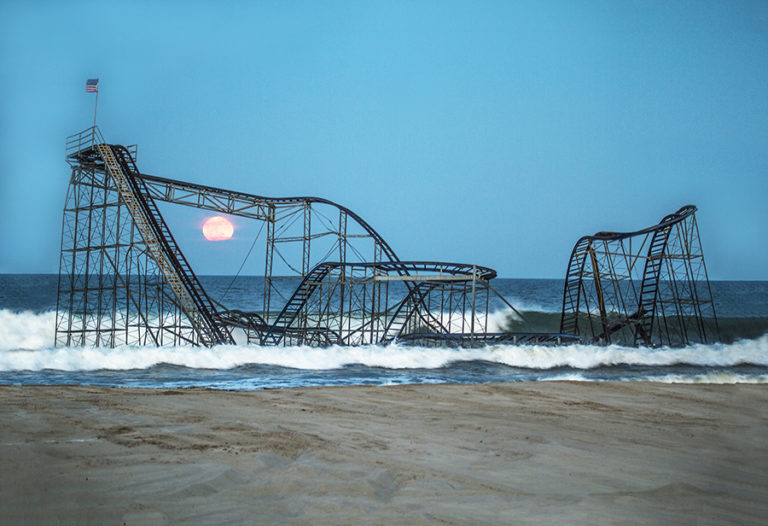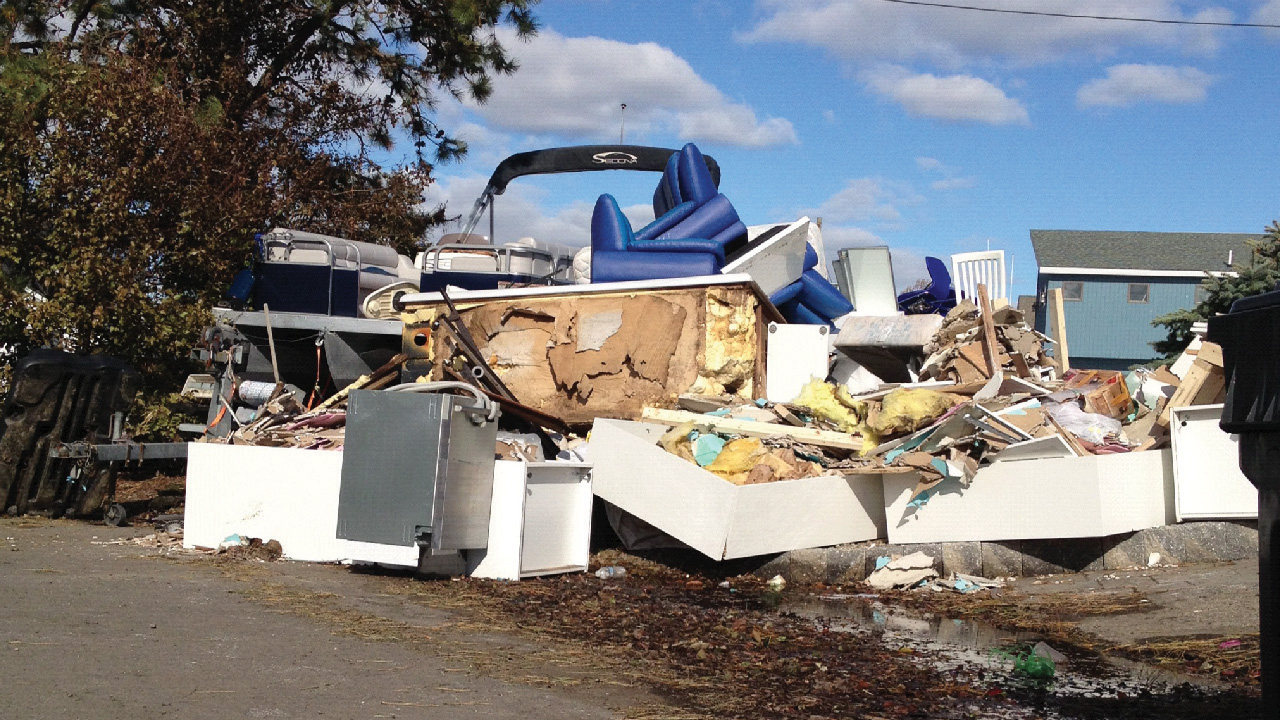Remembering Superstorm Sandy: 10 Years Later

Photo Courtesy of Blur Revision Media Design https://www.blurrevision.com/
During the late hours of Monday, October 29, 2012, Superstorm Sandy made landfall on the East Coast, bringing storm surges and flooding never seen before. Longstanding Jersey Shore landmarks were pulled into the raging waters with ease. Houses were ripped to shreds by the power the waves possessed. Airports and Subway stations were flooded with several fleet of water. 346,000 New Jersey homes were destroyed or damaged in the storm’s wake with thousands more in New York. New York City Subway Stations became completely flooded, with some of the flood waters overflowing through the stair entrance.
Landfall
Superstorm Sandy was no ordinary storm. First making landfall in Jamaica as a Category 1 storm on October 24 and growing to a Category 3 Storm by the time it made way to Cuba on October 25, meteorologists originally believed it was the end of the storm. As the Sandy made its way northward parallel to the coast, water levels from Florida to Maine rose due to the counterclockwise wind pattern.
The intensity of the storm quickly began to rise again, as Superstorm Sandy encountered two other weather systems on its northbound track, making it shift gears and make direct impact on Brigantine, New Jersey with 80 mile-per-hour winds. Although no longer considered a Hurricane due to a lack of thunderstorm-controlled eye, the National Hurricane Center did continue to warn about the impacts to come.
The Storm Surges

Despite lack of the hurricane title, Superstorm Sandy’s span was over one thousand miles. Low atmospheric pressure alongside the sheer strength of the winds it possessed made the perfect breeding ground for storm surges to occur. Unfortunately, those powerful waves were beyond what any New Jerseyan or New Yorker could have expected.
Aided by the high tides during the Monday night third-landfall, storm surges across New York, New Jersey, Pennsylvania, Delaware and Rhode Island were recorded to be anywhere from 7 feet tall to 14.43 feet tall by the National Oceanic Atmospheric Association, shattering previous storm and tidal wave records anywhere from decades to centuries old. Bodies of water not prone to tidal flooding impacts were rocked by the sheer strength and magnitude of Superstorm Sandy.
Everything Changed
The coastline has since changed due to the storm’s impact. Beaches across New York and New Jersey now have a different look, with increased sand and vegetation to help protect the neighboring areas from future storm surges. Houses across the states have been raised higher, either by means of lifting or rebuilding.
Even as we approach the 10-year anniversary, there is still much to be done along the shore to be fully restored.
Headquartered in New Jersey, Colliers Engineering & Design saw the catastrophic impacts of the storm firsthand – witnessing the devastation from the employees and their lives and assisting in the rebuilding efforts by municipalities across the Garden and Empire States. Superstorm Sandy not only changed the lives of the communities it affected but it changed the field of engineering by increasing our standards and the way we look at the projects we work on. We are dedicated to continuing the efforts of restoration and rebuilding by providing solutions for a more sustainable future for our communities.
New Jersey residents and business owners looking for resources to continue the process of rebuilding can visit https://dep.nj.gov/sandy-10/resources/ for more information.

Comments are closed.